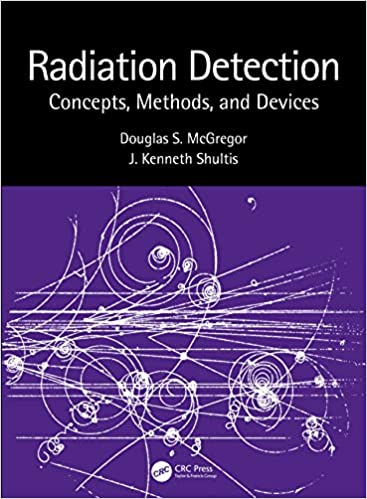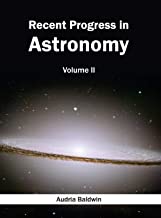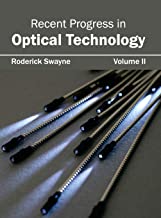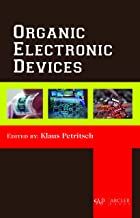Radiation Detection Concepts, Methods, and Devices
Original price was: ₹15,078.00.₹12,062.40Current price is: ₹12,062.40.
ISBN: 9781439819395
Author/Editor: Kenneth Shultis
Publisher: CRC Press
Year: 2020
2 in stock (can be backordered)
Description
Radiation Detection: Concepts, Methods, and Devices provides a modern overview of radiation detection devices and radiation measurement methods. The book topics have been selected on the basis of the authors’ many years of experience designing radiation detectors and teaching radiation detection and measurement in a classroom environment.
This book is designed to give the reader more than a glimpse at radiation detection devices and a few packaged equations. Rather it seeks to provide an understanding that allows the reader to choose the appropriate detection technology for a particular application, to design detectors, and to competently perform radiation measurements. The authors describe assumptions used to derive frequently encountered equations used in radiation detection and measurement, thereby providing insight when and when not to apply the many approaches used in different aspects of radiation detection. Detailed in many of the chapters are specific aspects of radiation detectors, including comprehensive reviews of the historical development and current state of each topic. Such a review necessarily entails citations to many of the important discoveries, providing a resource to find quickly additional and more detailed information.
This book generally has five main themes:
Physics and Electrostatics needed to Design Radiation Detectors
Properties and Design of Common Radiation Detectors
Description and Modeling of the Different Types of Radiation Detectors
Radiation Measurements and Subsequent Analysis
Introductory Electronics Used for Radiation Detectors
Topics covered include atomic and nuclear physics, radiation interactions, sources of radiation, and background radiation. Detector operation is addressed with chapters on radiation counting statistics, radiation source and detector effects, electrostatics for signal generation, solid-state and semiconductor physics, background radiations, and radiation counting and spectroscopy. Detectors for gamma-rays, charged-particles, and neutrons are detailed in chapters on gas-filled, scintillator, semiconductor, thermoluminescence and optically stimulated luminescence, photographic film, and a variety of other detection devices.
Additional information
| Weight | 0.0025 kg |
|---|
Product Properties
| Year of Publication | 2020 |
|---|---|
| Table of Contents | Origins 1.1 A Brief History of Radiation Discovery 1.2 A Brief History of Radiation Detectors 2 Introduction to Nuclear Instrumentation 2.1 Introduction 2.2 The Detector 2.3 Nuclear Instrumentation 2.4 History of NIM Development 2.5 NIM components 2.6 CAMAC 2.7 Nuclear Instruments other than NIM or CAMAC 2.8 Cables and Connectors 3 Basic Atomic and Nuclear Physics 3.1 Modern Physics Concepts 3.2 Highlights in the Evolution of Atomic Theory 3.3 Development of the Modern Atom Model 3.4 Quantum Mechanics 3.5 The Fundamental Constituents of Ordinary Matter 3.6 Nuclear Reactions 3.7 Radioactivity 4 Radiation Interactions 4.1 Introduction 4.2 Indirectly Ionizing Radiation 4.3 Scattering Interactions 4.4 Photon Cross Sections 4.5 Neutron Interactions 4.6 Charged-Particle Interactions 5 Sources of Radiation 5.2 Sources of Gamma Rays 5.3 Sources of X Rays 5.4 Sources of Neutrons 5.5 Sources of Charged Particles 5.6 Cosmic Rays 6 Probability and Statistics for Radiation Counting 6.1 Introduction 6.2 Probability and Cumulative Distribution Functions 6.3 Mode, Mean and Median 6.4 Variance and Standard Deviation of a PDF 6.5 Probability Data Distributions 6.6 Binomial Distribution 6.6.1 Radioactive Decay and the Binomial Distribution 6.7 Poisson Distribution 6.8 Gaussian or Normal Distribution 6.9 Error Propagation 6.10 Data Interpretation 7 Source and Detector Effects 7.1 Detector Efficiency 7.2 Source Effects 7.3 Detector Effects 7.4 Geometric Effects: View Factors 7.5 Geometric Corrections: Detector Parallax Effects 8 Essential Electrostatics 8.1 Electric Field 8.2 Electrical Potential Energy 8.3 Capacitance 8.4 Current and Stored Energy 8.5 Basics of Charge Induction 8.6 Charge Induction for a Planar Detector 8.7 Charge Induction for a Cylindrical Detector 8.8 Charge Induction for Spherical and Hemispherical Detectors 8.9 Concluding Remarks 9 Gas-Filled Detectors: Ion Chambers 9.1 General Operation 9.2 Electrons and Ions in Gas 9.3 Recombination 9.4 Ion Chamber Operation 9.5 Ion Chamber Designs 9.6 Summary 10 Gas-Filled Detectors: Proportional Counters 10.1 Introduction 10.2 General Operation 10.3 Townsend Avalanche Multiplication 10.4 Gas Dependence 10.5 Proportional Counter Operation 10.6 Selected Proportional Counter Variations 11 Gas-Filled Detectors: Geiger-Muller Counters 11.1 Geiger Discharge 11.2 Basic Design 11.3 Fill Gases 11.4 Pulse Shape 11.5 Radiation Measurements 11.6 Special G-M Counter Designs 11.7 Commercial G-M Counters 12 Review of Solid State Physics 12.1 Introduction 12.2 Solid State Physics 12.3 Quantum Mechanics 12.4 Semiconductor Physics 12.5 Charge Transport 12.6 Summary 13 Scintillation Detectors and Materials 13.1 Scintillation Detectors 13.2 Inorganic Scintillators 13.3 Organic Scintillators 13.4 Gaseous Scintillators 14 Light Collection Devices 14.1 Photomultiplier Tubes 14.2 Semiconductor Photodetectors 15 Basics of Semiconductor Detector Devices 15.1 Introduction 15.2 Charge Carrier Collection 15.3 Basic Semiconductor Detector Configurations 15.4 Measurements of Semiconductor Detector Properties 15.5 Charge Induction 16 Semiconductor Devices 16.1 Introduction 16.2 General Semiconductor Properties 16.3 Semiconductor Detector Applications 16.4 Detectors Based on Group IV Materials 16.5 Compound Semiconductor Detectors 16.6 Additional Semiconductors of Interest 16.7 Summary 17 Slow Neutron Detectors 17.1 Cross Sections in the 1/v Region 17.2 Slow Neutron Reactions Used for Neutron Detection 17.3 Gas-Filled Slow Neutron Detectors 17.4 Scintillator Slow Neutron Detectors 17.5 Semiconductor Slow Neutron Detectors 17.6 Neutron Diffraction 17.7 Calibration of Slow Neutron Detectors 17.8 Neutron Detection by Foil Activation 17.9 Self Powered Neutron Detectors (SPND) 17.10 Time-of-Flight Methods 18 Fast Neutron Detectors 18.1 Detection Mechanisms 18.2 Detectors Based on Moderation 18.3 Detectors Based on Recoil Scattering 18.4 Semiconductor Fast Neutron Detectors 18.5 Detectors Based on Absorption Reactions 18.6 Summary 19 Luminescent and Additional Detectors 19.1 Luminescent Dosimeters 19.2 Photographic Film 19.3 Track Detectors 19.4 Cryogenic Detectors 19.5 Wavelength-Dispersive Spectroscopy (WDS) 19.6 Cerenkov (Cherenkov) Detectors 20 Radiation Measurements and Spectroscopy 20.1 Introduction 20.2 Basic Concepts 20.3 Detector Response Models 20.4 Gamma-Ray Spectroscopy 20.5 Radiation Spectroscopy Measurements 20.6 Factors Affecting Energy Resolution 20.7 Experimental Design 20.8 Gamma-Ray Spectroscopy-Summary 20.9 Charged-Particle Spectroscopy 21 Mitigating Background 21.1 Sources of Background Radiation 21.2 Mitigation of the Radiation Background 21.3 Self-Absorption of Photons 21.4 Electronic Methods for Background Reduction 22 Nuclear Electronics 22.1 Mathematical Transforms 22.2 Pulse Shaping 22.3 Components 22.4 Timing 22.5 Coincidence and Anti-Coincidence 22.6 Instrumentation Standards 22.7 Electronic Noise 22.8 Coaxial Cables A Basic Atomic Data and Conversion Factors A.1 Fundamental Physical Constants A.2 The Periodic Table A.3 Physical Properties and Abundances of Elements A.4 SI Units A.5 Internet Data Sources B Cross Sections and Related Data B.1 Data Tables B.1.1 Thermal Neutron Interactions B.1.2 Photon Interactions show less |
| Author | Kenneth Shultis |
| ISBN/ISSN | 9781439819395 |
| Binding | Hardback |
| Edition | 1 |
| Publisher | CRC Press |
You must be logged in to post a review.






Reviews
There are no reviews yet.